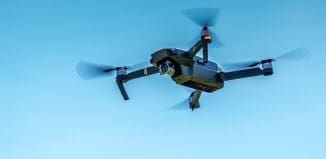Targeting Submarines Made Cheaper

This post is also available in:  עברית (Hebrew)
עברית (Hebrew)
For the first time, an unmanned aerial vehicle has deployed an anti-submarine warfare system to help detect submarines. The U.S. Navy and General Atomics used sonobuoys dropped from an MQ-9A Block V Reaper to track a simulated submarine target on a U.S. Navy Pacific test range.
The technology has the potential to significantly lower the cost of submarine hunting and free up larger, more expensive manned sub-hunting platforms such as the P-8A Poseidon military aircraft, to act as a command-and-control platform.
In the test executed last November, the Reaper deployed a mix of 10 sonobuoys that can detect underwater sounds – deployed to measure water conditions and monitor for targets. Then the UAV received and transmitted the data in real time to a monitoring station at Yuma Proving Ground in Arizona.
The test was part of the development of the MQ-9B SeaGuardian drone, which is part of a research and development project in conjunction with the Navy’s Naval Air Systems Command.
The Reaper managed to acquire and track an expendable anti-submarine warfare training target for three hours using the General Dynamics UYS-505 acoustic processing software.
The MQ-9B SeaGuardian will have four wing stations available to carry up to four sonobuoy dispenser system pods.
Doing airborne anti-submarine warfare is an all-around cheaper way to do ASW than with multiple P-8As, which cost much more per flight hour.
Bryan Clark, a retired submarine officer and senior fellow at Hudson Institute who co-authored a recent ASW study said that thanks to the use of a UAV, the P-8 can start to step back to be more of a [command and control] platform.
“Right now what has happened is a P-8 goes out, drops all the sonobuoys and hangs around burning flight hours while it monitors the sonobuoy field. And of course, you’ve got to have multiple P-8s to be able to cover the area. Whereas with this idea, you could have MQ-9s doing the deploying and the servicing of the sonobuoy field at a much lower flight hour cost.”
The limitation is that the P-8As have a much larger capacity for sonobuoys, which over large areas means they’ll still be important, Clark said. But with the support of drones able to receive and process data, you won’t need to risk as many P-8As to service the sonobuoy field, making the whole operation cheaper, according to defensenews.com.



























